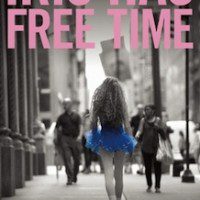One Tuesday afternoon in June, I went to a book launch party.
I hadn’t been certain that I would go: I only had an hour after work and before a lecture I had promised I would attend. I surmised that it would take about fifteen minutes to get uptown, another fifteen minutes to get back downtown, and so I could spend about twenty-five minutes at the party. Outside, people were flooding out of their offices, umbrellas up and open, pushing through the New York City drizzle to get to the subway. For a moment, I contemplated just staying at work, or going early to the lecture. But why should I do that? I had an hour. I had an umbrella.
Inside the party, waiters passed around flutes of champagne. Droplets of rain clung to and dribbled down the glass walls, I could see the gray pavement and gray sky. I waited in line to speak with the author. When it was my turn, I asked, “But it is a memoir or fiction?” I recognized the naivety of my question: a desire to classify books as a certain genre, neat little boxes, a primal need to know whether a work is true or imaginary. The author paused. “It’s fiction,” she said. “Loosely based on actual events.” She signed my book. I left, pulling my hair up into a bun, ignoring the rain, running to subway, and finally finding my friend who had graciously saved me a seat, with minutes to spare.
The reason why I had asked the her—her being Iris Smyles, the author of Iris Has Free Time—whether her book was “true” or “made-up,” is because as I was reading, I would pause and dog-ear a page, thinking, But this actually happens. The book chronicles the life of Iris, a twenty-something, in New York City, her friendships, her heartbreaks, her internships and jobs, and her adventures.
Told in vignettes, unconstrained by time, Iris Has Free Time captures the wandering quality of our twenties, the sense of possibility. Smyles’s free form—her shifting from first person point of view, to second person, to utilizing a Q & A format that is downright philosophical as a mode of storytelling (“In today’s busy, modern world, however, a haircut is a loss for which we occasion no ceremony.”)—is reminiscent of a modern Joyce, a Portrait of the Artist as a Young Woman. Her narrative is unconstrained by a traditional plot, but instead flits through experience, through memory, capturing the fast and loose contours of being in your twenties. Smyles agilely moves her readers through these experiences and her prose evokes the fleetingness of Iris’s journeys.
These journeys resonate with twentysomethings. Iris has a job teaching in a college, but she doesn’t love it. She has a boyfriend, Martin, whom she travels Europe with, but then they break-up. She has a strong friendship with May, who Iris’s father sometimes calls her sister, but the friendship ends.

Midway through the novel, Iris muses about how “we lose people to the future all the time. And we grieve; we expect to. So why shouldn’t we also grieve for what the past takes? Before is no different than after really, so if you can miss someone looking forward, you can just as easily miss some looking back.” We are no longer children, but haven’t yet achieved that white-picket-fence stability of adulthood. No one expects everything to last forever, but our twenties seem to be this process of shedding and re-shaping. What cats we are, slinking around the sidewalk at twilight.
Smyles’s writing captures the urgency that defines our twenties. She writes: “‘Get up! Get up! It’s autumn in New York; there are wonderful things to do!’ says the light as it hits you in the eyes, causing you to shrink back.” [p.146] Smyles perfectly understands the fleetingness of it; she writes, “You’ll look at me expectantly before the microwave, in time with our hearts, begins to beep its finale, telling us rhythmically, another sixty seconds has passed.” The seconds, the minutes, the hours, the weeks, how do they slip between our fingers? When you are fifteen, time seems to drag; when you are twenty-four the days spin.
Near the conclusion of the book, Smyles writes:
When an essay of mine was recently published on Nerve, I felt so proud—my story was featured on the home page beneath a large photo and ads!—naturally, I sent my parents a link. When I spoke to my mother on the phone a few days later though, and asked excitedly if she received it, she said. “Yes. But don’t mention it to your father. I’m afraid it will upset him. It’s a little dirty; you know how conservative we are,” she said gently.
“It’s fiction!” I said quickly, burning with shame. “It’s only fiction, Mom!” It’s fiction, despite the fact that another “character” says my name within the piece […] I use this “fiction” excuse for everything. If I ever committed a crime, robbed a bank say, and were caught in the act, I’d probably scream out, “Don’t arrest me! It’s fiction!”
Who is speaking here? Iris, the protagonist? Or Smyles, the author? Maybe both. As I read this scene I thought of my encounter with the author during that summer day. We classify what we read as fiction because we want to create a sense of distance between it and us. But maybe fiction isn’t the stark bright line between reality and imaginary, but the blurring of both, the funhouse of mirrors, where everything has potential and can be.
What Smyles and Iris Has Free Time tell us is that our twenties are a process of construction. Like fiction, as twentysomethings we actively work to create and invent this person who we will be.




